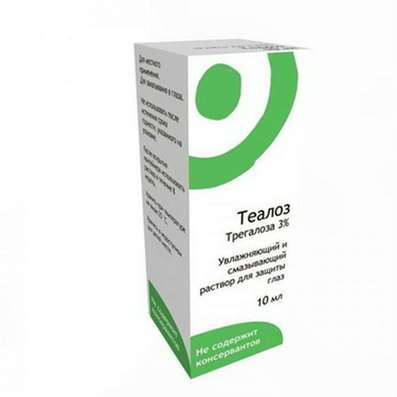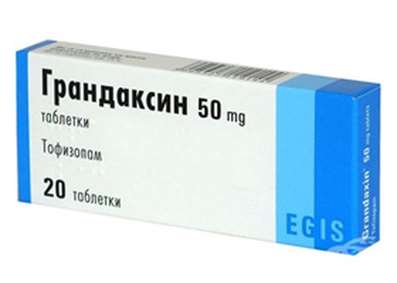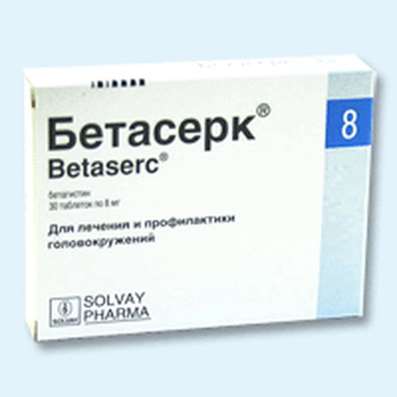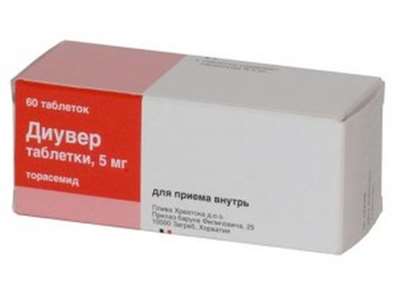Oxytocin
18 Dec 2016
Oxytocin is a peptide hormone of neurohypophysis which on structure reminds anti-diuretic hormone (ADG). Both hormones nonapeptides differing with only two amino-acid remains (oxytocin contains Ile3 and Ley8).
The new research of 2014 published in the Nature Communications magazine has shown that oxytocin along with already known effects (strengthening of a maternal instinct and social communications) plays a key role in restoration of muscular tissue. Oxytocin is considered as high-potential means for treatment of an age atrophy of muscles. Recently FDA has approved oxytocin researches in public as means against aging.
Oxytocin under certain circumstances indirectly interferes with release of adrenocorticotrop hormone and cortisol, and in some situations can be considered also by the antagonist of antidiuretic hormone.
Psychotropic action
Oxytocin exerts the expressed impact on psycho emotional condition of men and women therefore often it is called "love hormone" or "trust". He causes kinder arrangement to other people, allows to trust words of the specific person, however only in certain cases: it belongs only to the intra group relations — the attitude of the person towards people from other groups doesn't change in the best, for the worse (so-called "parochially altruism"). Hormone participates at once after the delivery in formation of the relation mother child.
Treatment of anorexia
Oxytocin helps with treatment of anorexia as the author of a research - professor of Janet Treasure claims. Article is published in the scientific magazine Psychoneuroendocrinology.
It is reported that scientists have applied oxytocin to treatment of anorexia at several girls. After two weeks of use of hormone at them disgust for food was gone, and a month later them actually have completely cured of anorexia.
Secretion of Oxytocin
Oxytocin is formed in neurons of kernels and in smaller quantity in neurons of supraoptichesky core. It is synthesized in the form of a big molecule precursor which is quickly split with formation of Oxytocin and neyrofizin of I. In secretory granules both fragments form a complex which consecrates from the nervous terminations located mainly in neurohypophysis. Besides neurohypophysis oxitotsin neurons are projected to other areas of a hypothalamus, a trunk and a spinal cord. They participate in a regulation of activity of the autonomic nervous system. Oxytocinum is synthesized not only in a CNS, but also in the lutein ovary cells, in a uterus and fetal covers. Please pay attention to Honluten.
Secretion of Oxytocin amplifies in response to boring of neck of uterus, vagina and papilla. It is at the time of delivery quite difficult to register rising of level of Oxytocin as it is allocated pulse wise and is quickly blasted by blood tsistinil-aminopeptidase. Nevertheless the most noticeable augmentation of secretion of Oxytocin becomes perceptible during the second period of labors in response to stretching of a neck of uterus and a vagina. Oestradiolum stimulates secretion of Oxytocin, and peptide hormone of ovaries relaksin suppresses it. The factors influencing secretion of ADG influence also secretion of Oxytocin, but to lesser extent. So, alcohol intake suppresses secretion of Oxytocin, and pain,deaquation, bleeding and hypovolemia, on the contrary, stimulate. Periphery action of Oxytocin hardly has any adaptive value at these states, however, perhaps, it participate the central mechanisms of a regulation of the ABP. Nevertheless therapeutic doses of Oxytocin can suppress water removal by kidneys that at its careless use sometimes leads to water intoxication.
Physiological effects of oxytocin
Uterus
Oxytocin stimulates the frequency and force of reducings uterus. However this action strongly depends on estrogen therefore the unripe uterus poorly reacts to oxytocin. In vitro progesterone suppresses action of oxytocin, and, perhaps, decrease in level of progesterone by the end of pregnancy plays a significant role in initiation of childbirth. Very low activity of a uterus is characteristic of the first two trimesters of pregnancy. Activity gradually increases in the III trimester, coming to the end with sharp rise childbirth. Sensitivity of a uterus to oxytocin correlates with its spontaneous activity. Entering of oxytocin it is possible to reach the beginning or strengthening of regular contractions on any term, but at the beginning of pregnancy much more high doses for this purpose are required. In the second half of pregnancy, generally in the last 9 weeks, sensitivity of a uterus to oxytocin increases by 8 times; at the same time density of oksitotsin receptors on cages miometria by the beginning of childbirth becomes 30 times higher, than on early terms of pregnancy. Difficulties with determination of level of oxytocin in blood, and also that fact that violation of secretion of this hormone doesn't influence the course of pregnancy and childbirth allowed to call into question a physiological role of oxytocin in regulation of childbirth. However in protection of this role says that the blocker of receptors atosiban was effective for prevention of premature birth (see below).
Mammary glands
Oxytocin plays an important role in release of milk. It in response to mechanical irritation of nipples, including when sucking, it causes reducing the mioepitelial cages surrounding alveolus’s of a mammary gland. As a result milk on lacteal channels arrives in lacteal sine from where it is exhausted by the child.
Action mechanism of Oxytocin
Oxytocin is bound to the receptor interfaced to G-protein; this receptor is close on a structure to V1a-and V2 receptors of ADG. In myometriums these receptors are accompanied by proteins of Gq and G11 which activate the phospholipids With splitting FIF2 with formation of IF3. The last releases calcium from intracellular depots that the calcium channels lead to change of permeability of a membrane, its depolarization and opening.
During pregnancy the density of receptors on myometriums can change, however on late terms the number of receptors is considerably enlarged that is followed by noticeable rising of sensitivity of a myometrium to Oxytocinum. However, perhaps, the augmentation of density of receptors is important not so much to start labors how many for reduction of uterus after the delivery. In addition Oxytocinum enlarges production of Prostaglandinums that also promotes reduction of a uterus.
Use of Oxytocin
The agents stimulating uterine activity most often use for stimulation of patrimonial activity (Dudley, 1997). Stimulation will be seen off when the risk of the continuing pregnancy for mother or fetus exceeds the risk bound to labors. Such situation arises, for example, at premature to amniotic waters, an all immunization, fetal arrest of development, placental failure (for example, at diabetes mellitus, preeclampsia and eclampsia). Before stimulation it is necessary to be convinced of a maturity of lungs of fetus (lecithin relation to sphingomyelin in amniotic waters more than 2) and lack of such contraindications as anomalies of situation and presentation, fetus hypoxia, pathology of placenta and cicatrix on uterus.
Oxytocin is the best agent for stimulation. It usually enter i.v. in the form of weak solution (usually the 10th honey/ml), it is desirable by means of the infusion pump. Though the question of the optimum scheme of introduction of Oxytocin remains disputable, usually begin with rate of infusion of 1 honey/min., enlarging rate no more than for 1 honey/min. each 30 — 40 min. Some authors recommend more active approach: to begin with rate of infusion of 6 honeys/min. and to enlarge for 2 honeys/min. (no more) each 20 min. In some clinical tests such approach allowed to reduce number of Cesarean sections. If labors don't begin at rate of infusion of 30 — 40 honeys/min., hardly they will begin also at higher rates. For maintenance of pains after the beginning of labors it is possible to lower a dose a little.
For stimulation it is necessary to watch the CARDIAC CONTRACTIONS RATE of mother and a fetus, the ABP of mother and uterine activity; the doctor has to be ready to give help. At emergence of signs of hyper stimulation (too frequent pains or a long strain of a uterus) infusion of Oxytocin should be stopped immediately. Oxytocin T1/2 at i.v. introduction makes only about 3 min. therefore symptoms of hyper stimulation have to disappear in a few minutes after the infusion termination. Because of similarity to ADG Oxytocin in high doses has ant diuretic effect. At rate of infusion of 20 honeys/min. and more water removal by kidneys decreases. In these conditions introduction of large volume of liquids, especially hypotonic (for example, 5% of a glucose), can cause the water intoxication leading to cramps, a coma and even death. Due to vasodilating action Oxytocin can cause an arterial hypotension and reflex tachycardia. Deep anesthesia, interfering with reflex tachycardia, can strengthen an arterial hypotension.
Stimulation of patrimonial activity
In most cases at a normal current of labors it isn't necessary to use Oxytocin as it leads to hyper stimulation of a uterus, unsafe for mother and a fetus. At the weak patrimonial activity most often arising at primipara the experienced obstetrician can successfully apply Oxytocin. At the same time rate of infusion usually doesn't exceed 10 honeys/min.; rate of infusion seldom happens more than 20 honeys/min. effective if lower rates aren't effective. Traumatic damages at mother and a fetus because of the forced expulsion of the fetus at incomplete disclosure of neck, hysterorrhesis, and also a fetus hypoxia owing to disturbance of a placental blood flow can be complications of hyper stimulation of a uterus. Oxytocin in the first period of labors at a lingering phase of slow disclosure of a neck of uterus is most effective, and also at a stopping of disclosure of a neck of uterus and a stopping of advance of a fetus. Reflex emission of Oxytocin in the second period of labors can decrease At epidural anesthesia; in this situation the current of labors can be accelerated careful introduction of Oxytocin. Third period of labors and early postnatal period. After the child's birth, and also after artificial abortion the uterus has to be reduced that strongly reduces risk of massive bleeding. For maintenance of reductions and a tonus of a uterus right after labors often prescribe Oxytocin. Usually the 20th honey of Oxytocin is dissolved in 1 l of infusion solution and enter i.v. with rate 10 ml/min. within several minutes before reduction of a uterus. After that rate of administering is reduced to 1 — 2 ml/min. and administer the drug before transfer of the puerperal to puerperal unit. At inefficiency of Oxytocin and for lack of an arterial hypertonic it is possible to use ergot alkaloids ergometrine or methylergometrine. The stressful test is with introduction of Oxytocin. This test is used for assessment of a condition of a fetus at high risk of complications at mother and a fetus (for example, at a diabetes mellitus or arterial hypertonia). Oxytocin is entered i.v. with rate of 0.5 honeys/min., then rate of administering is gradually enlarged before emergence of 3 pains in 10 min. At the same time define whether pains are followed by change of the CARDIAC CONTRACTIONS RATE of a fetus as it is known that the CARDIAC CONTRACTIONS RATE changes at a hypoxia. By this test it is possible to estimate the reserve opportunities of a placenta necessary for pregnancy continuation.
Blockers of oxitocin receptors
The peptide analogs of oxytocin competing with it for receptors can theoretically be used for prevention of premature birth (Goodwin and Zograbyan, 1998). The most studied medicine of this group is atosiban. In clinical testing it considerably reduced the frequency of fights in case of premature birth, however atosiban, perhaps, is unsafe for newborns, and therefore its application isn't approved by FDA.
Prospects of oxytocin application
In recent years we began to understand much better as secretion of hormone is regulated. Opening and detailed studying of new regulators of secretion of hormones will inevitably lead to development and new means for treatment of violations of this secretion. So, description of a special receptor of stimulators of secretion of STG and identification of a probable endogenous ligand of this receptor (Kojima et al., 1999) open new opportunities of influence on secretion of STG. Detection of five types of receptors and receipt of the selective stimulators of separate types of these receptors will probably allow to create more effective medicines possessing smaller side effects. Opening of capability and dopamine receptors to formation of functionally more active geterodimer (Roche-ville et al., 2000) can give new methods of impact on secretion of STG or Prolactinum.
Achievements in area of peptide synthesis and genetic engineering allowed to receive various analogs of hormones which apply in clinic in case of deficit or excess of hormones of a hypothalamus and hypothesis now. Though benefits recombinant of hormones before natural isn’t shown yet, it seems obvious that recombinant hormones will charge more and broader application. The understanding of structurally functional features of hormones of hypothesis will allow creating new effective medicines. So, identification of details of interaction of STG with his receptor allowed by method of a directed mutagenesis to create pegvisomant is a synthetic analog of STG having properties of the net antagonist of STG. It is possible to hope that similar methods will possible to receive the modified forms and other hormones.

 Cart
Cart





